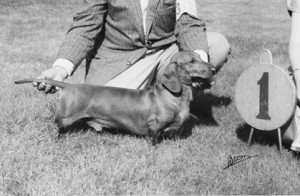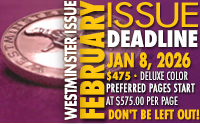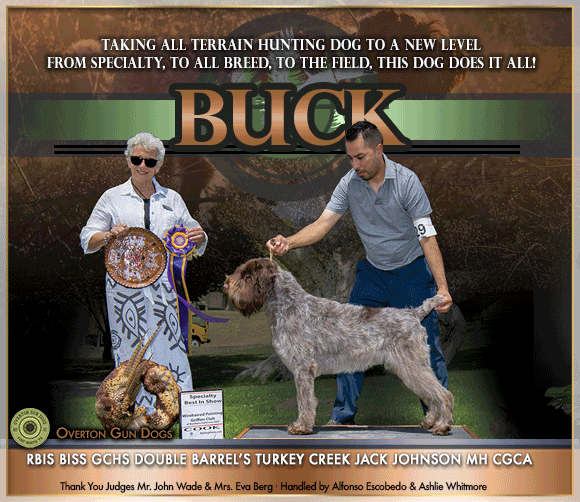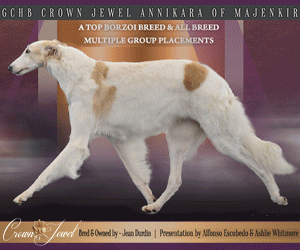From The CC Vault: Breed Pioneers – Ellenbert Dachshunds
By Amy Fernandez
Originally published: August 2013
 Many breeds experienced radical transformations during the late ‘30s and early ‘40s. Dachshunds may top that list. In 1924 AKC registered 43 Dachshunds. In 1934, annual registrations exceeded 1200, a 3000% increase. America had a few well-established kennels, but like most breeds, imports were the big winners and lifeblood of breeding programs. Germany’s economic nosedive forced breeders to sell their best stock. For Americans, it became a goldmine of top quality.
Many breeds experienced radical transformations during the late ‘30s and early ‘40s. Dachshunds may top that list. In 1924 AKC registered 43 Dachshunds. In 1934, annual registrations exceeded 1200, a 3000% increase. America had a few well-established kennels, but like most breeds, imports were the big winners and lifeblood of breeding programs. Germany’s economic nosedive forced breeders to sell their best stock. For Americans, it became a goldmine of top quality.
Ellen and Herbert Bertrand were established Scottie breeders when they set their sights on standard Smooth Dachshunds. Their kennel prefix, Ellenbert, signified their true partnership in the venture. Before shopping for stock they consulted the era’s Dachshund authorities. Flottenberg was repeatedly mentioned, a kennel that was relatively unknown outside Germany. The Bertrands soon changed that.
G.F. Muller founded Flottenberg in the early 1900s, experimenting with noted German strains for a decade before he started showing. Right out of the starting gate Flottenbergs won steadily, gaining sieger and grand sieger titles. German clubs had lately instituted mandatory hunting trials as a championship qualification to counteract extreme types creeping into native breeds. Mueller not only produced moderate, athletic, working Dachshunds, he adamantly promoted realistic working trials –not drag hunts or staged tests.
The Bertrands had the means and the desire to win. In 1932, they returned from his Berlin kennel with half-brothers Feri and Heini, and their dam, Heka. Black and tan Heini was BOV and Group Second at Westminster in 1933. Shown nine times, he won two groups, but his younger, red half-brother, Feri, put Ellenbert on the map. Shown 51 times, Feri earned 46 BOBs, 40 placements, and six group ones. He was BOV and Group Second at Westminster in 1935 under Dachshund authority Herbert Sanborn. His dam, Ch. Heka Flottenberg, went opposite. In 1936, Feri went Group Third. He also won DCA in 1934, 1935, 1936, and 1937.
Small by today’s standards, Feri was under 20 pounds, and politely described as rangy. Heini was somewhat cobbier. Inbreeding and linebreeding their offspring produced something less extreme. Ellenbert’s first homebred champion, Feri’s son, Ch. Waldorf Ellenberg finished in 1934.
By then, they had established Ellenbert Farm in Greenwich, Connecticut. Their luxurious kennel included a house for their handler and kennel manager Gordon Forsyth. A terrier specialist who handled the Bertrand’s Scotties, he became major factor in Ellenbert’s success. His son, Bob, learned dogs at Ellenbert.
Shortly after becoming DCA president in 1935, Herbert and Ellen departed for a world tour. The AKC Gazette’s Dachshund column reported their progress as members received postcards and updates. This was fascinating enough back then, but the biggest thrill happened March 27 when Herbert called from Hong Kong to check on his dogs. “The telephone rang in Gordon Forsyth’s cottage on Ellenbert Farm. The familiar voice of Mr. Bertrand enquired after the family, the dogs, the landscaping, as clearly as if he were in Scarsdale! By the time Mr. Forsyth caught his breath, he was explaining that he would be home in plenty of time for the DCA May specialty at M&E.” Clearly a telephone call from Hong Kong was not expected in 1935!
The Bertrands continued importing German stock. Their frequent transatlantic voyages on luxury ocean liners made the society pages, adding to their kennel’s reputation. Ellenbert flooded the ring with Flottenberg type, consistently winning all major shows. Their overwhelming presence and heavy advertising popularized a lighter, more athletic hunting-type Dachshund in the show ring. They were also instrumental in promoting the first AKC Dachshund trials in 1935.
In 1940, they imported their tenth Flottenberg. WWII made this their final German purchase. World travel and dog buying were part of the Bertrand lifestyle. So, they turned to Britain’s thriving Dachshund scene. It predated Germany’s, but Dachshunds weren’t used for hunting. The emphasis was strictly on show dogs and they found one. A three year-old, red smooth out of German breeding, Ch. Dimas Earthstopper was a showstopper. He debuted at nine months going Breed from the puppy class and was a multiple Best In Show winner when the Bertrands imported him. He finished with two Bests from the classes, becoming Ellenbert’s first Best In Show winner. But, that wasn’t the big story. Long, low, and well over 30 pounds, Earthstopper was no agile hunter. But his style and presence made him a lethal group contender. American judges loved him. We will never know his specials potential because his career ended abruptly that summer when Herbert died suddenly. Ellenbert kennel was dispersed. Feri set a type and produced many champions, but this carefully-bred bloodline was not perpetuated.
Earthstopper ultimately had the lasting impact on Dachshund type during that critical era. Sold to Rivenrock Kennels in California, he only sired two champions, but his direct descendants include Ch. Falcon of Heying-Teckel, sire of 82 champions, and Ch. Favorite of Marienlust, sire of 90 champions.
Short URL: https://caninechronicle.com/?p=252620
Comments are closed












